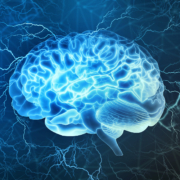Rethinking the stages of Parkinson’s disease
Having a loved one diagnosed with Parkinson’s disease can be overwhelming. After all, there is currently no cure for this progressive neurological disorder that affects 1 million Americans, and it’s a complex disease that affects everyone differently.
The four cardinal symptoms of the disease include tremors, Bradykinesia or slowness of movement, rigidity and postural instability.
Many of these symptoms are caused by a gradual loss of dopamine-producing neurons in the brain—these are hugely important in controlling our movement—researchers don’t fully understand (yet) why the cells that create dopamine start to die off.
Learning that someone has Parkinson’s can also be difficult news to process since we don’t have a way to gauge how the disease will manifest over the course of a lifetime, says Dr. Rebecca Gilbert, chief mission officer at the American Parkinson Disease Association (APDA), a non-profit that provides wellness programming, education and support to people with Parkinson’s disease.
“Sometimes people suspect something is going on with their health or they may have noticed some symptoms and hoped it would get better on its own,” Dr. Gilbert says. “They often need time to digest this information.”
One thing that may help in comforting patients is that Parkinson’s isn’t a rapidly progressive disease. A mean disease duration typically is about 13 years.
“I always tell patients that Parkinson’s goes slow or slower,” says Dr. Stewart Factor, director of the Jean and Paul Amos Parkinson’s disease and movement disorders program at the Emory University School of Medicine in Atlanta. “I have patients in my practice who have experienced 25 to 30 years of symptoms. This disease tends to move very slowly over a course of a lifetime.”
Established motor stages
Currently, most medical professionals agree that there are five known stages of Parkinson’s disease, known as Hoehn & Yahr staging. According to the Parkinson’s Foundation, these stages are focused on motor symptoms and include:
- Stage 1. Symptoms are mild and usually affect only one side of the body. Patients can still function normally in daily life, though they might notice a tremor or some stiffness.
- Stage 2. Symptoms begin affecting both sides of the body. Movements become slower, and tasks like dressing or eating may become more challenging. However, patients can still live independently.
- Stage 3. Balance issues start to appear, increasing the risk of falls. Walking becomes slower and more unsteady. At this stage, many people still manage most of their daily activities but may need help with tasks like dressing or getting around.
- Stage 4. Symptoms become severe. Walking and standing become difficult, and patients may need a walker or other assistance. Patients likely require help with daily activities and may no longer live independently.
- Stage 5. This is the most advanced stage. People are typically bedridden or use a wheelchair and need round-the-clock care. In addition to severe motor issues, non-motor symptoms like dementia or hallucinations may develop.
While this breakdown of stages focuses on physical consequences of Parkinson’s disease, a growing number of experts have called for a broader frame of reference.
Their contention: the current staging system does not incorporate non-motor and mental health aspects of the disease.
Both Dr. Factor and Dr. Gilbert report that among a certain portion of the medical community, there are new ways for thinking about the progression of Parkinson’s disease, and those new ways include non-motor symptoms and mental health issues.
“The 5 stages only track motor symptoms—one side or two sides—and [they don’t] take into account the whole array of symptoms [such as] non-motor symptoms,” says Dr. Gilbert. “A person might have depression due to Parkinson’s or difficult blood pressure management or bad sleep issues. None [of that] is captured in [the old] model. You may feel impacted by Parkinson’s, but you’re considered a [Stage] 2 [or] you feel fine but have motor symptoms. There isn’t so much correlation between that scale and quality of life for patients.”
She continues: “We would like to develop a scale that takes into account what is happening in the brain, not just clinical exams. Right now, we’re in transition from thinking about Parkinson’s as a clinical diagnosis—from ‘Let’s examine you in the office and put you on this scale,’ to being holistic about what is biologically going on with disease and making a scaling system based on that. There is no scaling system right now that does both but there are two scales being worked on at conferences.”
The rest of this article describes three different “phases” of Parkinson’s—an approach that reflects some of the concerns the doctors raised.
New way of thinking
During the early phase, a Parkinson’s patient may not have any motor-related symptoms, but they still technically have the disease. So how is Parkinson’s diagnosed at this juncture? Turns out, there are several ways to discover it.
If a patient doesn’t have any symptoms, in very rare cases the presence of the disease and the discovery that the person is losing dopamine cells can be found incidentally, either via a spinal tap or an imaging study for another health issue. At that time, it may be determined that the patient has any of the many causative genes for Parkinson’s (two of the most studied ones are SNCA and LRRK2), although genetic causes of Parkinson’s only exist in 15 percent of patients.
In this initial phase, Parkinson’s may not be on a patient’s radar if they have such non-motor symptoms as a loss of sense of smell, mood changes, depression, anxiety, apathy, insomnia, restless legs and a sleep disorder called REM sleep behavior disorder (RBD) where people act out their dreams while they’re sleeping.
“People who have REM sleep behavior disorder can ultimately develop Parkinson’s, but it could be 20 years or longer before that happens,” Dr. Factor says. “If a patient shares that they have this or some of the other more prominent symptoms, we’ll do imaging and spinal taps to see if they’re close to developing the disease.”
The symptomatic phase
The next phase of Parkinson’s is the symptomatic phase.
As the name suggests, this is when a patient starts to develop some early motor symptoms. Some of these symptoms might include a tremor in fingers (see this article) , ticks or tremors elsewhere in the body (see this article and this article), or some problems with dexterity, such as buttoning a shirt.
“At this point, you might experience a change in handwriting, or it may be that the person starts writing cramped or small sized letters,” Dr. Factor says. “A person at this phase won’t swing their arms when they walk, their posture might change and their hands or elbows might become flexed.”
Dr. Factor adds that patients in this phase often express frustration at the disconnect between their brain and body.
Generally speaking, doctors prescribe medication when Parkinson’s disease interferes with activities of dailing living, regardless of whether symptoms are unilateral (only on one side of a patient’s body) or bilateral (on both sides). Under the direction of a neurologist, most patients take levodopa, a drug that converts into dopamine in the brain, to treat their symptoms.
As the disease progresses, other symptoms begin to surface, including changes in walking, a shuffling gait. Parkinson’s patients about halfway into this symptomatic phase might walk slow and end up running without the ability to stop.
“You can also freeze where your feet feel glued to the floor,” Dr. Factor says. “These are all things that lead to balance difficulties and falling.”
The latter phase
As the disease continues to advance, the brain’s responsiveness to levodopa may become unpredictable and lead Parkinson’s patients to dyskinesia, which can be tics and other involuntary muscle movements. At this time, too, cognitive issues such as short-term memory issues and executive function issues, such as multitasking and following directions, may begin to occur—as outlined in this article, some degree of cognitive impairment has been found in up to 40 percent of individuals in the early stages of Parkinson’s disease.
With cognitive issues can come anger, sadness, and grief at the loss of the life a patient once knew.
In this third phase, it may be difficult for a patient to stand or walk without help. This is likely when a patient may experience such symptoms as hallucinations or delusions, will need a wheelchair and, potentially, around-the-clock care from a healthcare professional.
While there is currently no medication that will completely stop Parkinson’s disease from progressing, advances in the field continue to proliferate, including developments in the last year that advanced our understanding of the biology of the disease.
This includes the major discovery of a molecular biomarker designed to detect pathologic alpha-synuclein proteins.
“We now have a more robust understanding of what’s happening in the brain and that the hallmark of Parkinson’s is the abnormal accumulation this protein,” Dr. Gilbert says. “We think this process happens long before you might develop symptoms, that there’s this phase where this biologic process is happening in the brain, but you aren’t experiencing any symptoms because the brain is compensating for this protein accumulation.”
This article has been factchecked. For more about that process, click here.









